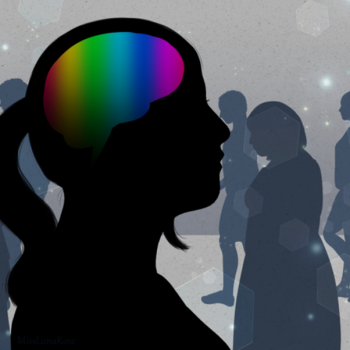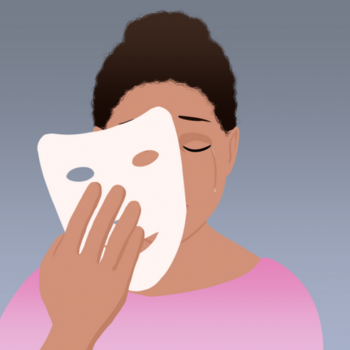There are already many misconceptions when it comes to autism, but women in particular can be overlooked and misdiagnosed.
Gender bias in research methodology and general misconceptions about autism have marginalised women. In particular, women and girls with autism engage in more masking behaviours than their male counterparts — masking is the practice of minimising behaviours that are socially unacceptable or ostracising and adopting new ones that better allow one to fit in; for example, many with autism find eye contact to be unnatural and awkward, but learn how to maintain it (or pretend to, such as looking around someone’s head) for social benefit. This often results in under-diagnosis or delay in diagnosis of autism, as this behaviour can have the unintended consequence of making clinicians oblivious to their impediment.
There are many ways in which autism can appear differently in women. Some of these may include less intense interests and more human-focused interests (such as social sciences, pop culture, or the arts), less prevalent stimming behaviour (which are repetitive, self-soothing behaviours such as rocking back and forth or twirling), increased rates of anxiety and depression, and better use of camouflaging (the practice of those that mask autistic traits in order to blend in). These differences in symptom presentation can make their developmental delays fall under the radar, especially for those who are considered to be high-functioning.

A 19-year-old woman using her laptop at home for school (Credit: Sharon McCutcheon)
This gender bias has caused the sex ratio of autism diagnosis to increase over time. A long-term study of the prevalence of autism from the Centers for Disease and Control and Prevention (CDC) found from the sex ratio of autism diagnosis was 4:1 in 2014 (meaning four men were diagnosed for every one woman).
For these high-functioning young autistic women, studies have found that they tend to engage in much higher rates of social compensation strategies (such as maintaining a close distance to peers) than their male counterparts. There have been several studies examining how the camouflaging effect influences clinical assessments. The findings suggest a divide between girls with autism’s self-reported attributes and clinicians ratings. They also show the way in which providers diagnose autism is biased towards men. This means the way that we think about autism, the way that it’s constructed, measured, and understood is all through the lens of how men experience it. Since we’re now just beginning to understand that women experience and cope with autism differently, it also means we have a massive information gap that needs to be filled.
Future autistic research needs to be designed for gender inclusivity. Historically, most of these studies have focused on men, and when researchers in the present try to replicate these findings to include women on the spectrum, they discover completely different results. It’s also important to emphasise how this is a human rights issue. The Universal Declaration of Human Rights marked the first global agreement of inalienable equality and freedom amongst all people in 1948. This led to the eventual creation of the Human Rights Act of 1998, which protects human rights in the UK, and outlines 16 fundamental rights of all people, including the rights to liberty, freedom of expression, and education. In order to create the conditions that allow for all autistic individuals to realise the human rights they are legally entitled to, institutions must be held accountable for creating said conditions.

Children with special needs play at a school for autism (Credit: World Bank Photo Collection is licensed under CC BY-NC-ND 2.0)
Moving forward, clinical assessments must be designed and informed by, and only by, a gender-inclusive praxis that takes all experiences into account. More research needs to be conducted specifically around treatment that focuses on the vulnerabilities faced by women. There also needs to be a movement to educate providers about these differences. Perhaps different diagnostic tools should be created for assessing women entirely. Thirdly, the medical community must set goals to close the gap in diagnosis; the more women are misdiagnosed or overlooked, the more harm is caused.
Finally, we must all take responsibility for the role each of us plays in our daily lives. Diversity will not happen on its own and we must push to see a gender-inclusive representation of those on the spectrum in the media, advocate for this inclusivity in our places of work and school, and commit to ditching our stereotypes of autism. To reiterate, people from all walks of life have autism and many of them are women. The research we have for it must reflect this reality.
The views expressed in this article are those of the author and do not necessarily reflect the views of EachOther.
About ‘The Inspired Source’ Series
This series is part of our work to amplify the voices of aspiring writers that are underrepresented in the media and marginalised by society. Each piece examines a human rights issue the author or their community is affected by and preferably have a position on how we might begin to address it. Find out more about the series and how to send us a pitch here.









